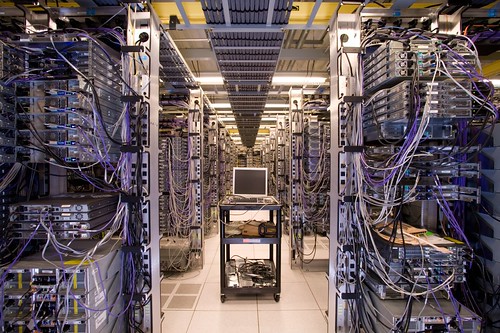السلام عليكم ورحمة الله وبركاته
الكبير منا والصغير
فلها تأثير ايضا على سلوكيات الاطفال الذي يعشقون العاب اطفال
فهل الألعاب للتسلية فقط ؟؟ ام هي للتربية ايضا ؟!!
اللعبة التعليميّة تعد نشاطاً منظّماً يتّبع مجموعة قواعد في اللعب ، وتكون اللعبة بين شخصين أو أكثر يتفاعلون للوصول إلى أهداف تعليميّة محددة، ويمكن التمثيل على هذه الألعاب بما يسمى بالمنطق الرياضي باستخدام حلقات دائريّة لتكوين معادلات؛ والفائدة منها تكون لتحويل المعلومات الرياضيّة من المفاهيم المجرّدة إلى حقائق واقعيّة تدركها الحواس وتكون مسلية.
وهناك أيضاً ألعاب تُستخدم في تحسين ملكة اللغة فتتجه عادةً نحو تنمية مهارات القراءة والطريقة الصوتية والتهجئة والقواعد والمفردات اللغوية في المعجم؛ مثل لعبة الخربشة المشهورة في الغرب (Scrabble) وقد ظهرت بلغات أجنبيّة أخرى لإثارة المفردات اللغوية؛ وقد لا يستفيد منها في هذه النقطة سوى الأعمار من (13-18سنة) في اللغة الأم، أما إذا كانت لغة مكتسبة فقد يستفيد منها من هم في أعمار أكبر ممّا ذكرت.
تكون هذه الألعاب غالباً مربوطة بالعلوم الاجتماعية، وهي تجمع بين صنع القرار وبين عناصر الحياة الواقعيّة للمحاكاة، ولكنها بالتأكيد مبنية على التفاعل والمنافسة بين المشاركين وهما الصفتان المميزتان للألعاب.. ولكن في ألعاب المحاكاة ربما لا يتطلّب الأمر وجود رابح أو فريق رابح، ويمكن أن نمثّل هنا بلعبة المستهلك مثل (المونوبولي) وإن كان هناك رابحون فهم أولئك الذين شعروا من خلال المساومة بأنهم قد حصلوا على مقدار كبير. والأمر الأكثر أهمية هنا بالطبع هو ملاءمة ذلك النشاط لحاجات تعليميّة محددة. وفي العلوم الاجتماعيّة -وخاصة الاقتصاد والجغرافيا والتاريخ وعلم النّفس- طُوّر الكثير من ألعاب المحاكاة، وتُعزى شهرتها إلى الطبيعة الفعّالة لظروف اللعب، فألعاب المحاكاة تفيد في مجال الإرشاد واختيار المهنة.
نتائج أبحاث أمريكيّة حول أهميّة الألعاب:
- يجب أن يكون الطالب على معرفة بالهدف من استعمال اللعبة لتكون أكثر إيجابية.
- الاهتمام بالظروف التي تُدار فيها اللعبة.
- بمقدور الألعاب تعليم الحقائق والمفاهيم بفعالية تضاهي فعالية التعليم التقليدي.
- الألعاب في بناء المفردات والرياضيات أفضل من التعليم التقليدي.
- الألعاب تزيد من دافعيّة التعلّم عند الطلبة، فالمنافسة تشجّع الطلبة على مساعدة بعضهم.
- للألعاب أثر وجداني كبير؛ لأنها تساعد كثيرا في تغيير المواقف.
من الأفكار الجميلة التي تنمّي قدرات الأطفال في المدرسة في صفوفهم:
- تحويل ركن من الصف أو المنزل إلى سوق للأوراق الماليّة أو إلى بقالة.
- قيام الأطفال بتنظيم أركان مختلفة في الصف أو في المنزل.
- قيام الطفلة بوضع ركن مطبخ خاص في غرفتها أو المنزل.
- قيام الطفلة بوضع مكان لنوم الدمى وما شابهها.
- قيام الطفل بوضع قسم في بيته أو مستودع صغير تكون فيه بعض الألعاب أو المجسّمات، ويمكن أن تكون كورشة لقطع الأخشاب أو تركيب الأخشاب وقطع من الأثاث، وتصليح الأبواب..
- تمثيل الحكايات والقصص داخل البيت والفصل.
- تحويل ركن في المنزل للزراعة لتعرف قدرة الخالق جلّ وعلا.
للطّفل عالمه الطفولي الخاص:
أخيراً يُفترض في جميع النشاطات المذكورة أن تكون مثيرة إلى درجة كبيرة، وتحث الطفل على محاولة إنجاز الأهداف الموضوعة لكل نشاط. كما يجب بذل عناية كبيرة في تقويم واختيار الألعاب. ويُفترض فيها أيضاً أن تُدخل البهجة في النفوس وأن تكون مجزية، ولا ننسى أن نجعل لهم عالمهم الخاص في اللعب، وعدم التدخّل في تفاصيل طريقة اللعب، وأن تتم ممارسة الألعاب في جو من الحريّة، كي يكون هذا أيضاً باباً من إطلاق العنان للطفل أن يعتمد على نفسه ولو شيئا يسيرا، ويتحمّل بعض المسؤولية، ويبني شخصيّته بإشراف والديه.
إذا نظرنا إلى الماضي...
من عاشقي (الفلكلور) والتراث مَن يرى أن الحضارة المصنوعة باتت تثير الغثيان، بعد أن دخلت في روح العصر، ونحرت سلامة العقول والأعصاب بضجيج الآلة وضوضاء الجهاز الصوتي.. وأُفسِد الذوق المهذّب بغبار المعامل والمصانع.. ومن هنا سادت النّزعة الفلكلورية... وللحديث عن الألعاب الفلوكلورية باب آخر يأتي الحديث عنه قريباً إن شاء الله تعالى.
